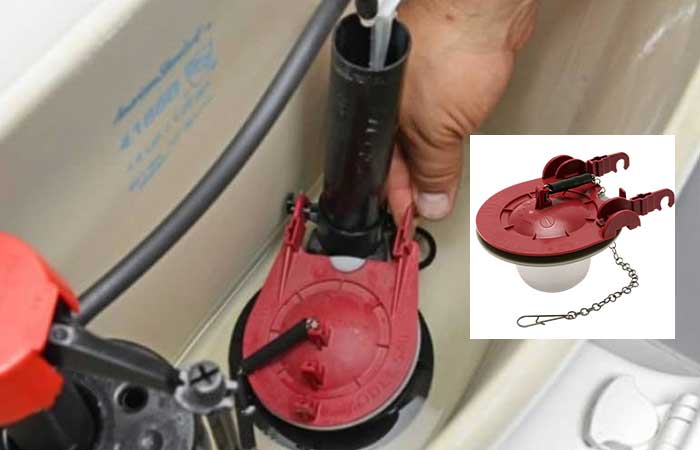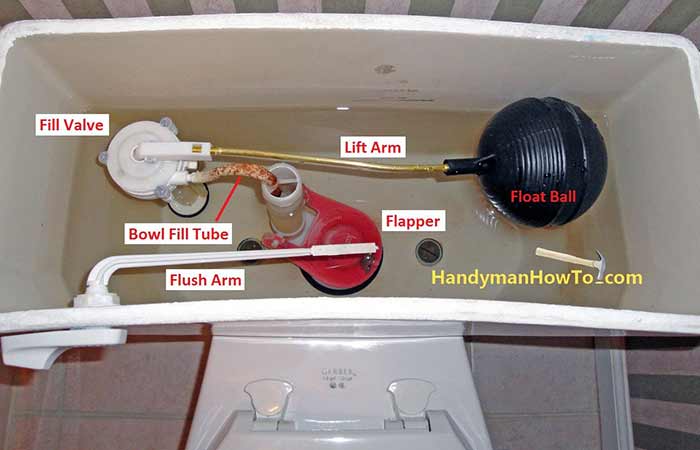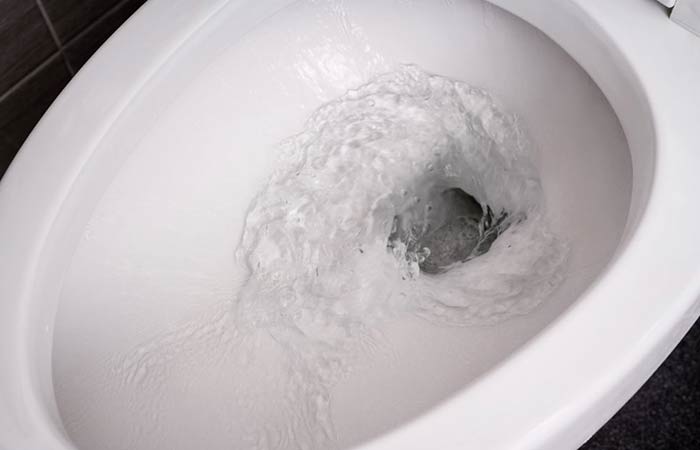Toilet Flushing By Itself-Causes & Fixes
In most cases, you expect the toilet to stay shut and only flush when in use. However, there are times when you are sure there’s no one in the toilet and yet you hear a flushing sound. It can be quite annoying and even spooky not to mention the fact that it increases your water bill significantly.
Also called phantom flushing or ghost flushing, the toilet flushing itself is usually caused by leaks and faulty parts in the parts of the toilet. The result of that is that the toilet lets water flow from the tank to the bowl either consistently or at certain levels giving the flushing sound.
We look at some of the causes of this issue and how to fix each one. While a lot of the problems can be easily solved at home, you might need the services of a plumber for the very complex ones. Some of the solutions even require replacing your toilet wholesomely as it might be so worn out that repairs won’t do it any good.
Why Toilet Sounds like it’s Flushing by Itself?
Some of the reasons your toilet flushes randomly on its own and their solutions are as follows:
A faulty flapper

The flapper of your toilet plays the all-important role of opening and closing the hole between the toilet tank and the toilet bowl.
When you flush the toilet, it opens the hole allowing water to rush from the toilet tank to the bowl to flush away wastes.
When the water has run out of the tank, the flapper closes thus allowing the tank to fill up again.
The problem with flappers is that they don’t last as long as the rest of the toilet unit. Most will be functional for about 5 years then get damaged by the water and frequent use of the toilet.
A damaged flapper will not keep the water within the tank. As such, the water will either continuously leak into the bowl or get flushed out automatically when the tank is full and there is some weight on the flapper.
Solution
When a toilet flapper comes to the end of its useful life, you just need to buy another one and replace it. The flapper isn’t a complex part of the toilet and requires a simple procedure to remove it.
When buying a new one, go with the old one to ensure you buy the exact type and size for your type of toilet. If the procedure seems intimidating or you’re simply not sure of how to go about it, enlist the services of a qualified plumber.
A faulty float ball
The float ball (or other shape) has the important role of keeping the water level in the tank at a certain level. If the water level is too low, the toilet won’t give you enough power when you flush. You might have to flush several times on end to get the power you need.
If, on the hand, the float is set too high that there’s too much water in the toilet tank, your toilet will either leak out the excess water or flush itself every now and again.
Another issue on toilet floats is that it can be damaged such that it’s not regulating the water properly. If the float ball is damaged so that water enters it, there will likely be too much water as the regulation of the inlet will be compromised. Your toilet will experience the ghost flushing in this case.

Solution
If the float ball is simply set too high that the toilet tank gets too much water, simply bend the stem holding the ball downwards such that the float ball ends up in a lower position than before.
If the stem is made of plastic and can’t be bent, you can adjust the small screw at its start to move away from the ball to lower the amount of water getting into the tank.
If the ball is damaged that water gets inside it, you’re better off just getting a new one. It shouldn’t cost much. Also, get a ball with the same exact dimensions as the previous one.
A malfunctioning flush valve gasket
Another one of the common causes of phantom flushing in your toilet is a faulty flush valve gasket. The flush valve gasket is a seal around the flush valve that provides a watertight seal that keeps the water in the tank from draining into the bowl.
When this gasket is worn out, poorly fixed or damaged, it’ll allow water to leak down the drain and you can either hear a flushing sound or steady leak into the bowl. If any other gaskets on the toilet unit are broken, you’ll likely see leaks either into the toilet bowl or the floor.
Solution
If the gasket is simply fixed poorly, you can remove it then reinstall it properly. If, on the other hand, it’s damaged or worn out, you’ll need to get a new one then install it. This is quite simple and won’t take much of your time.
The procedure for replacing the flush valve gasket is as follows:
- First, turn off the water at the cutoff valve located below the toilet seat on the wall.
- Flush the toilet then soak up the water remaining in the water tank. The aim is to get as dry a water tank as possible. This will prevent spills and make it easy to work with the fixtures.
- You should then unscrew the water supply nut before removing the water line from the toilet.
- Look for the wing nuts holding the screws to the bowl of the toilet. Remove them. If they’re rusty or simply tough to remove, add penetrating oil, give them a few minutes then remove them.
- Having released the toilet tank from the bowl, carefully remove the tank from the bowl then remove its bolts.
- Remove the flush valve nut. It’s usually easy to remove by hand although you might need a lubricant and wrench if it’s too tight.
- Clean the toilet and any other fixtures that appear dirty before heading over to the next step.
- You can then replace the flush valve gasket or even the flush valve itself with the new one. After that, tighten the flush valve nut with your hand until you get a tight fit. Don’t overdo it.
- You then place the tank to bowl gasket over the flush valve at the bottom of the tank. Some toilet tanks such as those from Kohler come with triangular gaskets with the gasket being placed over the valve before the washer and nut are added. As you apply the screws, always place washers on either side of the toilet and other fixtures. This prevents damage to the fixtures by the nuts.
- After this, carefully place the toilet tank back on top of the toilet bowl. Align the nuts correctly then tighten the wing nuts.
- Reinstall the water supply line then tighten its nut.
- Turn the water supply on then check for any leaks around the fixtures.
- You can then flush the toilet to check whether there are any leaks on the toilet as well.
- Let the water fill up the toilet tank then wait for an hour to check if there is any leak. If this method isn’t effective, add food color to the water in the water tank. If you return to find the food color in the bowl, it means that there’s a leak which needs fixing.
After this, the toilet shouldn’t flush itself anymore.

Poorly positioned or faulty refill tube
The refill tube of your toilet is a narrow and flexible tube in black or white that sits at the top of the toilet tank. It’s connected to the fill valve and has the role of providing water to refill the toilet bowl.
At times, this tube can be damaged, detached or plainly fitted in poorly. With poor-fitting, the tube is either too deep or too shallow in either situation, your toilet will make a flushing sound when not flushed.
Solution
The solutions to these issues are fitting the refill tube properly into the valve if it’s poorly fitted or reattaching it if it’s not attached to the fill valve. If the refill tube is damaged, you should repair it or replace it with a new one.
These problems will often make the toilet flush itself. At times, the problems go beyond these ones and would require replacing the whole toilet. This requires that you get a qualified plumber to do the job.
Tips to Prevent the Toilet Flushing on its Own
If you want to avoid most of the problems you face with your toilet, put the following tips in practice:
- Always read the manual to your toilet and any fixtures to avoid fixing them wrongly or poorly.
- For rusty or tough screws, always use penetrating oil to loosen them up before unscrewing them off. Use lubricants and even dish soap on some items that seem tough and stiff before working on them.
- Only tighten screws and nuts till you feel they’re tight enough. If you overdo it, they’ll end up cracking toilets and other appliances.
- Unless advised so by a professional, always replace a fixture by its exact replica for the best user experience.
Always the brand and type of toilet fixture before changing any parts to ensure you’re using the same brand at all times.
Further Reading;